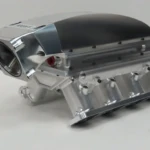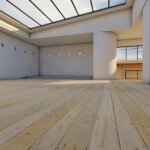Navigating the World of Desktop CNC Machine Tools: Your Ultimate Selection Guide
The maker movement and rapid prototyping have driven a surge in demand for easy-to-use, high-precision manufacturing tools. At the forefront of this revolution are desktop CNC machines—compact and powerful systems that bring industrial-grade machining capabilities to workshops, garages, studios, and small businesses. Unlike their industrial counterparts, these benchtop wonders offer unprecedented flexibility without requiring factory floor real estate or a six-figure investment. But with dozens of models vying for attention, choosing the right machine is critical to turning your vision into tangible, precision parts. This guide provides you with the basic criteria to effectively evaluate your options.
Why desktop CNC machines are revolutionizing manufacturing:
Desktop CNC mills and routers democratize precision machining. They can perform complex operations on materials ranging from plastics and wood to aluminum and even harder metals – from intricate contouring and cavity machining to precise drilling. For engineers, product designers, jewelry manufacturers, and educators, these machines can reduce lead times and costs for prototyping, low-volume production, or custom component creation. The key is to match the machine’s capabilities to your specific application needs.
Key factors for choosing desktop CNC machine tools:
-
Material capabilities and cutting performance:
- ask: Do you primarily process softwoods and plastics, or do you need to machine aircraft-grade aluminum or a tougher alloy?
- Looking for: The machines feature high rigidity (strong cast iron or heavy-duty aluminum frame), powerful spindle (500W to 2.2kW+) and low runout. Spindle speed range (10,000 – 24,000+ RPM) determines material compatibility and surface finish quality. Machines with active cooling (liquid or air-cooled spindles) can handle longer metal jobs without overheating.
-
Accuracy and Repeatability:
- ask: What level of dimensional accuracy and surface finish does your project require?
- Looking for: Resolution (number of steps per millimeter/inch) and rated accuracy specifications (for example, ±0.02mm – ±0.05mm). Ball screws and linear guides offer superior accuracy and service life compared to lead screws and unsupported rods. Check the gap compensation function.
-
Working area and Z-axis travel:
- ask: What is the maximum size of the part you plan to produce? How much Z-axis clearance is required for tool holders, vise and high stock?
- consider: Real world available space – consider fixtures. Machines such as the popular Tormach PCNC 440 offer impressive rigidity in a compact footprint, while larger milling machines are suitable for processing sheet metal.
-
Software and control ecosystem:
- ask: How integrated is the workflow from design (CAD) to toolpath generation (CAM) to machine control (G-code sending)?
- Looking for: Compatible with industry standards (G-code interpretability). User-friendly bundled software is a plus (eg Fusion 360 for hobbyists, PathPilot for Tormach), but make sure the controller (eg GRBL, LinuxCNC, proprietary) runs reliably. Offline controller enhances workflow stability.
-
Build quality and durability:
- ask: Is the machine designed for light hobby use or demanding day-to-day operation?
- evaluate: Materials (structural steel > aluminum profiles > MDF), assembly and surface treatment, quality of linear motion components and spindle bearing construction. Look for positive user reviews about long-term reliability. Dust management systems significantly protect components.
- Security and support:
- ask: What safety features are included (emergency stop, housing/spindle guard)? What is the availability of technical support and replacement parts?
- Prioritize: Machine with comprehensive safety features. Research the manufacturer’s reputation for customer service, documentation availability (manuals, setup guides), warranty terms, and vibrant user communities.
Where GreatLight can enhance your CNC journey:
While investing in a powerful benchtop CNC can unlock incredible potential, certain situations require greater expertise and capabilities:
- Bridging the gap: When your benchtop CNC faces limitations – complex 5-axis geometries, ultra-tight tolerances (< ±0.01mm), high-volume production, or challenging specialty alloys - professional manufacturing services step in. GreatLight operates at an advanced level.
- Advanced five-axis capabilities: Gretel focuses on precision 5-axis linkage CNC machining. This technology allows cutting tools to approach the workpiece from virtually any angle in a single setup. This eliminates the inaccuracies of multiple setups and enables the creation of organic shapes, complex contours and organic shapes not possible on a 3-axis machine – let alone standard desktop models.
- Material mastery: Go beyond standard aluminum and mild steel. GreatLight handles a wide range of engineered materials: titanium, Inconel, stainless steel, brass, copper, magnesium and high-performance plastics with special finish requirements.
- Seamless end-to-end solution: In addition to processing, GreatLight offers comprehensive One-stop organizing service. Need anodizing for enhanced corrosion resistance? Precision surface grinding? Does heat treatment increase strength? Complex assembly? GreatLight manages the entire process chain, ensuring consistency and quality control.
- Combination of speed and precision: Combining state-of-the-art 5-axis equipment with optimized tool path strategies and rigorous quality processes allows GreatLight to quickly deliver custom precision parts without compromising the rigorous standards typically required in the aerospace, medical device, automotive and high-tech industries.
Conclusion: Choose wisely to succeed
Choosing the ideal benchtop CNC requires careful analysis of your project scope, materials, and accuracy requirements. Excellent entry-level and prosumer machines exist (such as those from Shapeoko, Carbide 3D, Tormach, and others) that enable users to achieve impressive results. However, recognizing the transition point to professional services is key. For components that require elegant 5-axis machining, extreme precision, high batch repeatability, advanced materials science, or impeccable final finishing, working with a specialist manufacturer like GreatLight is critical.
GreatLight leverages cutting-edge technology and deep processing expertise to transform complex designs into flawless realities. If your requirements exceed the capabilities of the best benchtop machines, or if you need reliable, scalable production capabilities, explore the advantages of working with dedicated precision engineering experts. GreatLight ensures the highest standards of quality, performance and timely delivery, allowing you to focus on innovation rather than manufacturing constraints.
FAQ: Answers to your desktop CNC and professional machining questions
Q1: What are the main differences between a three-axis desktop CNC machining center and a five-axis machining center?
Answer: A 3-axis machine tool (X, Y, Z) moves the cutting tool linearly along three planes. For complex multi-faceted parts, material orientation must be changed manually, increasing setup time and potential for errors. 5-axis machines add two axes of rotation (usually A and B/C). This allows the cutting tool to approach the workpiece from any direction in a single settingenabling complex geometries, undercuts, and significantly superior accuracy and surface finish on complex contours while reducing lead times.
Q2: Can it be used as a desktop CNC machine tool? real Is cutting metal good?
A: Many modern producer/hobby benchtop CNC machines can effectively machine non-ferrous metals such as aluminum, brass, and copper with the appropriate fixtures, tooling, feeds, speeds, and coolant/lubrication. However, machining harder steels or heavy-duty production can be challenging. Rigidity, spindle power and cooling become key limitations. For reliable, high-precision metal parts or high-volume parts, professional CNC services are recommended.
Q3: What typical tolerances can a good desktop CNC tolerate?
Answer: A fully functional desktop CNC mill can achieve the following ranges of tolerances: ±0.05mm to ±0.125mm (0.002" to 0.005") Key properties for compatible materials such as aluminum under ideal conditions. Consistently achieve tighter tolerances (<±0.025mm / 0.001") often require specialized industrial machinery, climate control, and strict process controls such as those utilized by GreatLight. Shop floor capability documentation provides the best baseline.
Q4: When should I consider using a professional service like GreatLight instead of my own machine?
Answer: The main indicators include:
- The requirements are always stricter than ±0.05mm.
- Parts that require simultaneous 5-axis machining.
- The output is too high to achieve efficient single-machine output.
- Materials other than aluminum/brass/plastic (e.g. steel, titanium, Inconel).
- Complex parts requiring advanced fixtures or multiple operations.
- Necessary post-processing (anodizing, heat treatment, etc.).
- Lack of time or expertise for in-house processing.
Q5: How quickly can Honglaite deliver customized precision parts?
Answer: Gretel specializes in Rapid prototyping and on-demand production. While part complexity, materials and order quantities vary, GreatLight prioritizes efficient execution. Many prototyping projects can be completed in a matter of days – much faster than typical overseas options – without compromising quality or accuracy. Contact GreatLight directly for specific project timelines.
Q6: What materials can Hualite process that are difficult to process with desktop CNC machines?
A: GreatLight typically machines hardened alloys that require a lot of power, stiffness and thermal management. This includes Stainless steel (303, 304, 316, 17-4PH), tool steel, titanium alloy (Ti6Al4V), Inconel (625, 718), copper alloy, magnesiumand high-performance plastics such as PEEK, Ultem (PEI) and Vespel. Advanced tools and technology ensure outstanding results.
Q7: Does Ferrite only provide machining, or does it also provide design assistance?
A: While primarily focused on manufacturing excellence, GreatLight has deep engineering expertise. Their team can often provide valuable Design for Manufacturability (DFM) Feedback Optimize on your CAD models for cost-effective and reliable CNC production, ensuring manufacturability and identifying potential issues before toolpaths are generated. Complete design services may depend on project scope; inquire directly if required.
Q8: How can I get a quote from Gretel for my project?
A: Visit the GreatLight website and navigate to the Quote/Contact section. You typically upload a part drawing/3D model (STEP, IGES, X_T) and specify materials, quantities, required tolerances and surface finish expectations. The GreatLight engineering team will review your requirements and provide a competitive quote quickly.









































